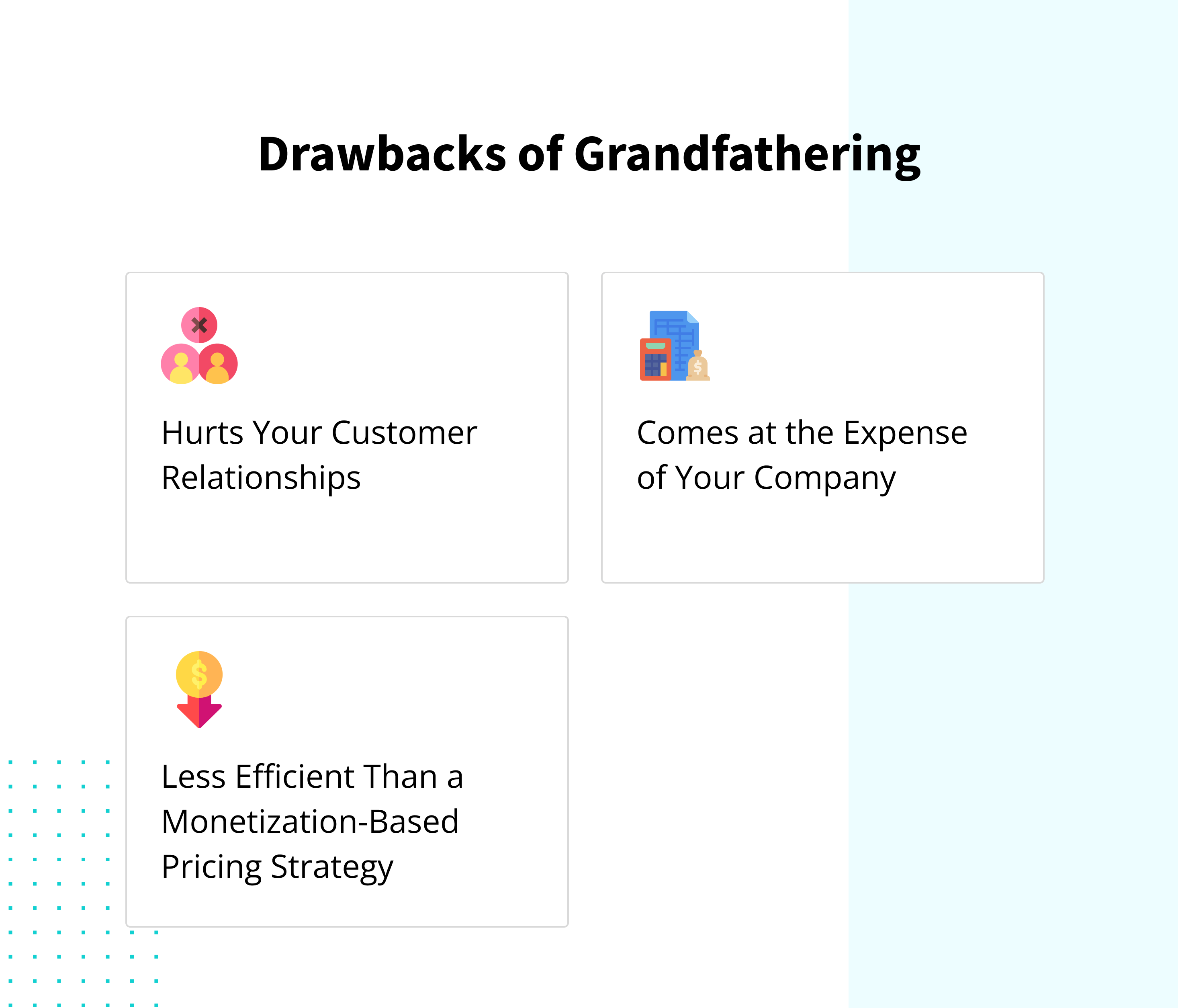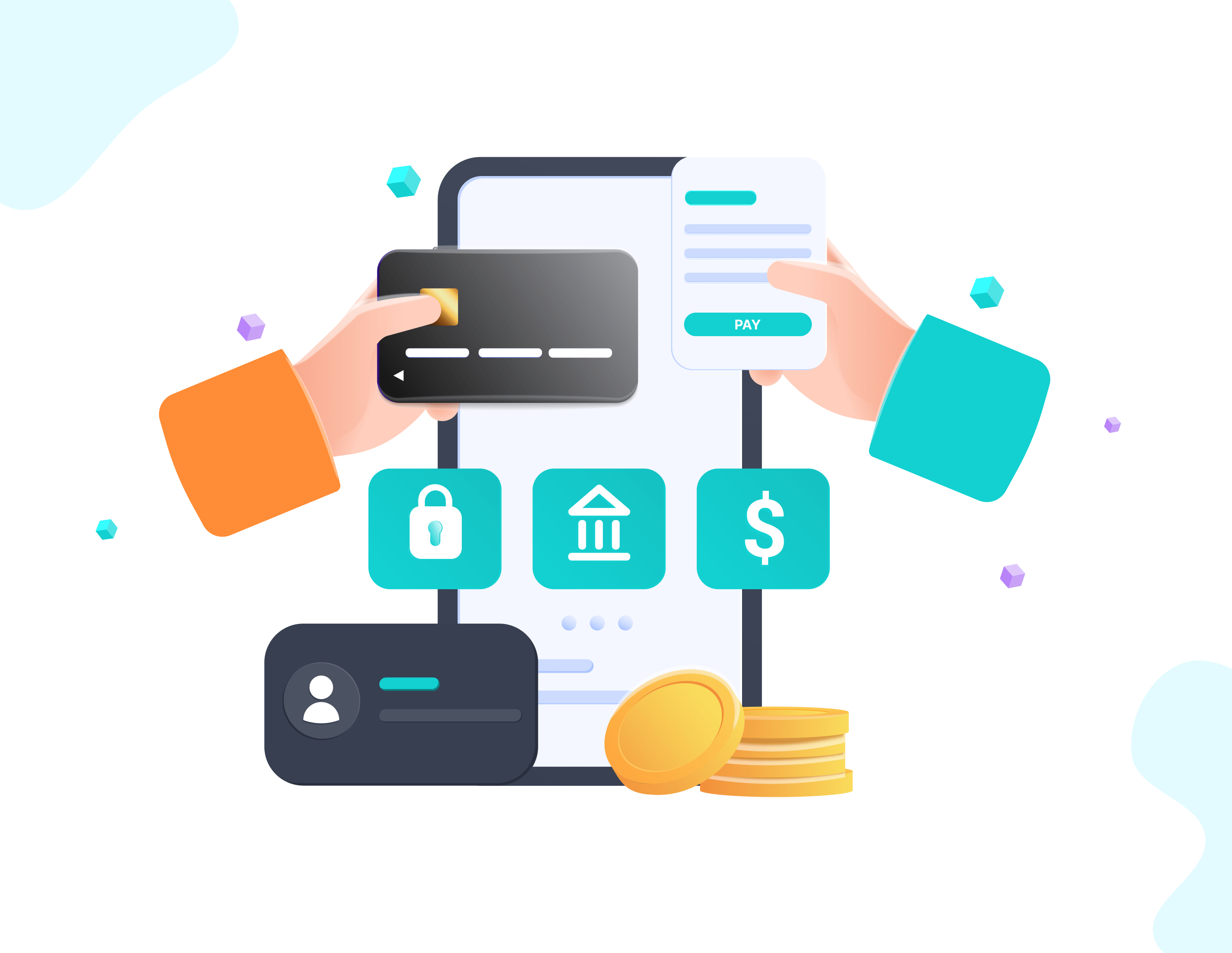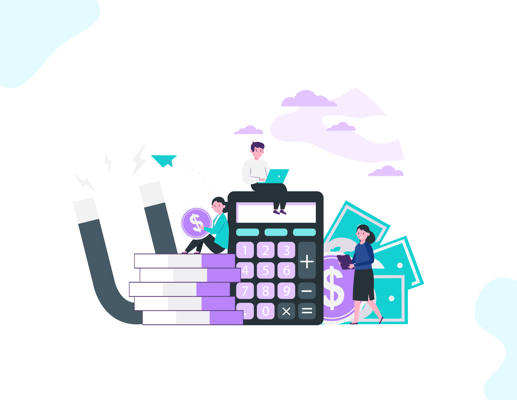Merchants often change (usually increase) their pricing after adding new features or optimizing their products/services. And most businesses opt for grandfathering to introduce this price change. If you don’t know what grandfathering is, read along. Grandfathering is a pricing strategy that allows merchants to charge the same price from existing customers that they initially signed up at while charging the updated price to new customers.
While this pricing strategy may sound normal, in fact, rewarding for loyal customers, it has some drawbacks attached to it. This blog sheds light on the advantages of grandfathering and explains its drawbacks in detail. You can go through the information, weigh the advantages & drawbacks and decide if you should opt for this pricing model for introducing a price change.
Advantages of the Grandfathering Clause
-min.png?width=2932&height=1800&name=Infographic%20-%201%20(1)-min.png)
Here are the advantages of using the grandfathering clause:
1. Run Pricing Experiments With Higher Retention Rates
Customer acquisition cost is always higher than retaining existing customers. So, ideally, it’s better and more affordable for businesses to retain their existing customers. And that’s exactly what grandfathering helps merchants achieve.
Using the grandfather clause, you can keep charging your existing consumers the same price. This will likely keep them associated with your business instead of scaring them away. And ultimately, you’ll be able to retain more consumers, eventually lowering your customer acquisition cost. In a nutshell, with grandfathering, you can run pricing experiments that focus on retaining more customers. However, that never means you should stop acquiring new ones.
2. Maintain Long-Term Customer Satisfaction
Customer satisfaction is quite crucial for any business, regardless of the domain. After all, only if the customers are satisfied, they’ll continue to use the products or services offered by a company, right? And grandfathering can help you maintain customer satisfaction for a long time.
Grandfathering allows you to charge the same price to your existing/loyal customers while you charge the updated price to the new ones. This makes the existing customers feel distinguished, special, and satisfied, motivating them to stay with your business for a long.
Drawbacks of the Grandfathering Clause

Grandfathering also has some drawbacks you need to know about before you use this strategy for your business:
1. Hurts Your Customer Relationships
While it seems grandfathering should boost your customer relations, the truth is the opposite; it ruins it. Here’s how:
When you improve your product or add more features while charging the same price, you’re actually lowballing your own product in your customers’ eyes. Because of this, you might notice a higher churn rate in your grandfathered customers compared to the ones paying the regular price. On the other hand, if you charge a higher price for the additional features, the customers will find your product more valuable. And only this type of customer is what you’d want for your business.
2. Comes at the Expense of Your Company
It’s a great gesture to reward your loyal customers who’ve been with your business since its inception in the form of discounts and good customer service.
However, that never means you should keep charging them the same price even after significantly improving the product or adding new features. It’s simply not sustainable for the business.Your business needs an active flow of cash to run operations and scale. However, if you don’t apply the new pricing to your existing consumers, you’re going to fall short of a lot of cash which will negatively impact your company’s growth.
3. Less Efficient Than a Monetization-Based Pricing Strategy
Not charging the updated price from your existing customers usually means you’re focusing on acquiring more customers to cover the loss. However, that’s not possible for most businesses because an acquisition-based growth strategy is way more inefficient than monetization-based pricing and is incapable of making up for the financial burden of grandfathering.
Example:
Let’s say you have millions of customers in total and a few thousand early/existing customers. In this case, you can easily use the grandfathering strategy as it applies to a tiny chunk of your consumer base.
However, that’s not the case for most businesses. The majority of small-mid businesses have a few thousand customers in total. And grandfathering the initial customers won’t be a smart decision, as for them, each customer hugely impacts the bottom line.
How To Increase Charges for Older Consumers?
While confronting your existing consumers after you change the pricing isn’t easy, it’s essential for your business growth. Therefore, you need to change the pricing as your business grows, but you can be more flexible about breaking the news to your existing customers.
For instance, instead of abruptly shocking your customers about the pricing change, let them know that you respect their presence and want to reward them genuinely. And to do that, you can offer your customers a time-boxed grandfathered discount. A timeboxed grandfathered discount is basically a discount wherein your existing consumers can continue to pay the same amount they signed up for, for a specific time, before the new pricing kicks in. This will make your consumers feel content and give them enough time to understand the value the new pricing will bring in.
Doing the above will help you keep your customers happy, reduce churn, seamlessly change your pricing, and support your bottom line. You can also partner with inai to seamlessly increase the charges for older consumers. Read along to find out how inai can help.
How Can inai Help?
inai offers subscription management solution that can help you create and manage multiple pricing models, such as grandfathering, dunning, couponing & billing for self-serve or sales-led models. This way, you can gradually change the pricing for your existing customer without losing your customers or compromising your revenue.
.png?width=123&height=71&name=inai%20logo%20-%20dark%201(1).png)

%20(1).png?width=941&height=250&name=CTA%20(9)%20(1).png)



.png?height=400&name=Header%20-%20Top%20Payment%20Methods%20In%20Nigeria%20(1).png)
.png?height=400&name=Header%20-%20Top%20Payment%20Methods%20in%20the%20UK%20(1).png)